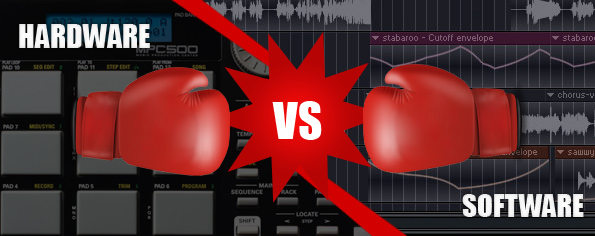Hardware and Software: the unending clash
We are on the brink of witnessing the never ending struggle between the hardware and the software components of our beloved devices, as they escalate to a higher level. The truth is that technology is becoming cheaper by the day, with production shifting to countries like India, Korea etc to a point where china is dominating 17% of the world’s production, which is to say that everything that we, buy, need, desire, is made in and/or by china. The economic feasibility of incorporating high-end hardware component is increasing at an exponential level, making it possible for one to procure a phone with retina display and an 8 megapixel camera for under $79.Hardware does impose certain incentives, however we have learned from the time that apple lost its lawsuit against windows on basis of a technicality, that the interface of a device and the perks of being the first pioneers to be developing the same are equally, if not highly vital.
The skill gap in interface development imposes issues regarding development, design, and execution of the same. The quality of software as services that are being made available to us by companies such as, android and apple is unfathomably high. The same companies have covered every aspect that may result in product differentiation, hence eliminating any possibility of a new competitor. The same software today is being pushed harder than ever in certain cases, while others are being kept exclusive to maintain and capitalize on the Veblen effect, which obviously results in customer satisfaction on a diverse consumer base scale. There is a pool of freshly designed apps that are taking their toll on the purchase decision of the consumers. Consumers are more and more inclined towards devices that offer pre-installed applications, paid or otherwise. Some consumers hold security in high regard and hence base their decision on software integrity and are more than comfortable with the inaccessibility imposed by them.
To put things in perspective, one may consider an instance of a consumer who will be just as influenced by the interface precision and lag free operation as compared to the camera quality and screen size of a device. With the declining costs of technology, one may wonder why more and more people would not turn to assembling their own hardware components which may suit their own software requirements. The reason behind this lag in motivation is the fact that any consumer is unsure of his own ability to deliver quality, which may match that of a readymade product. The consumer today, would much rather prefer holding a third party responsible for any drawbacks that may arise in the course of use of the same product, than to try and develop a custom alternative to solve his own needs.
Today one may assemble their own desktop system to enable operating high-end operating software, such as windows 8 or X, but may not do so, as they will not be able to address the heating issues of a high-speed processor. The same consumer might purchase a cell phone with an outdated android interface because the hardware components incorporate high resolution camera and loud speakers.
The question stands as to which side is the scale is tipping? And the answer is quite simple, as today the cost of production is on decline at a rapid speed, eventually the cost of commodity will be dictated only by the most advanced software components. We see the hardware components converging all around us, we have our TVs that are featuring cameras and browser setups, we have our cameras that feature android accessibility to all our Smartphone apps, our tablets are being turned into laptops and vice versa and last but not the least: our cell phones, that find the most diverse group of applications; they substitute our cameras, laptops, televisions and many more. The single component that continues to remain the same all throughout is the software, which no longer acts as an ancillary unit to hardware but dominates the incorporation of the hardware to begin with.
This was also proven by the wave of disappointment that overcame all the users of galaxy note 2, when it was announced that, the phone will not be made to feature the recent android upgrade. Galaxy note 2 was not the only flagship phone to not receive the android upgrade and considering the branding cost that was incurred by the consumers, it is safe to say that the unavailability of the upgrade, did give rise to substantial customer dissatisfaction.
As we settle in with our line thought strongly constructed regarding which of the two components will determine our purchase decision in the future, one might want to consider the versatility, compatibility and long life cycle flaunted by older software interface, for instance: it is not unheard of that people still use iOS 6 or 7 and android 4.4, without being a social outcaste or sacrificing on latest application accessibility. Having realized that, one may say the fight isn’t quite over yet.
About the author:
Vaishnavi Agrawal loves pursuing excellence through writing and have a passion for technology. She has successfully managed and run personal technology magazines and websites. She currently writes for intellipaat.com a global training company that provides e-learning and professional certification training.















